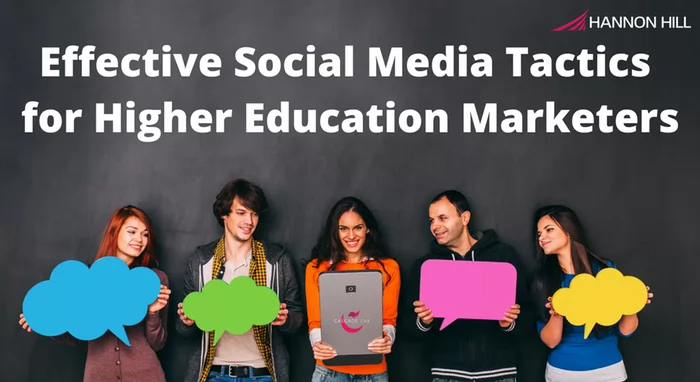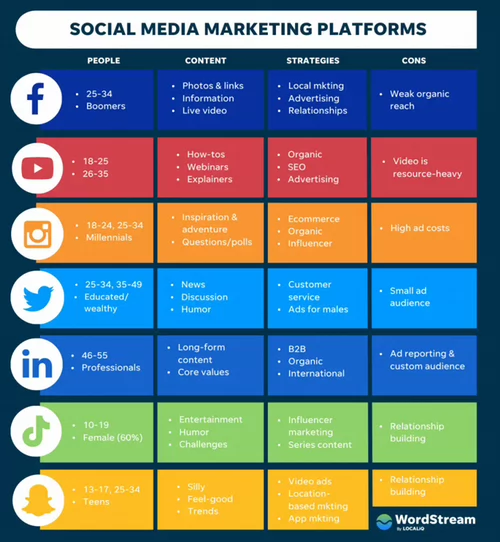
Social media is a cornerstone of student engagement strategies in higher education. With 95% of teens reporting access to a smartphone and 45% saying they are online "almost constantly," according to a Pew Research Center survey, social media platforms offer unparalleled opportunities for connecting with students.
For higher education marketers, leveraging these platforms can significantly boost engagement, enhance student recruitment, and foster a sense of community on campus.
Here's how:
Social media is more than just a communication tool; it's a dynamic platform that shapes how students interact with each other and the institutions they attend.
Research shows that social media effectively increases engagement and awareness of educational institutions, thanks to its ability to provide immediate, interactive, and personalized content.
Creating and publishing weekly content that promotes awareness of academic center services is crucial, especially starting in late September when students are settling into their routines. Addressing common misconceptions, such as the belief that only academically challenged students use these services or that asking for help equates to weakness, is essential.
Engaging current students through Instagram Stories or TikTok videos every week showcases the diversity of services available and normalizes their use, making it clear that academic support is a resource for all students.
Social media can transform perceptions by fostering a culture of inclusivity and support, encouraging more students to take advantage of the resources available to them. This strategy enhances student success and strengthens the institution's reputation as a supportive and resource-rich environment.
Students are drawn to authentic stories that reflect real experiences. Universities can highlight student stories, campus events, and academic achievements to create a narrative that resonates.
“91% of consumers stated that they are more likely to support brands that they perceive as authentic.” In the context of higher education, authenticity helps build trust and connection. And students need to build that trust if they want to move forward with one of the biggest decisions of their life.
Using platforms like Instagram and TikTok to share day-in-the-life videos or behind-the-scenes glimpses can humanize the institution and build a stronger emotional connection with potential and current students.
Encourage students to share their own content using branded hashtags. This not only provides fresh content but also promotes a sense of community and belonging. UGC campaigns, like photo contests or student takeovers, can drive engagement and showcase diverse perspectives within the student body.
According to a report by Adweek, user-generated content is 61% more effective with Gen-Z, which can lead to a higher engagement rate than brand-generated content.
UGC campaigns, like photo contests or student takeovers, can drive engagement and showcase diverse perspectives within the student body.
Collaborating with student influencers or alumni can extend your reach and enhance credibility. Influencers can authentically promote campus events, academic programs, or student organizations, effectively bridging the gap between the institution and its students.
According to a study by Influencer Marketing Hub, influencer marketing can deliver 11 times higher ROI than traditional forms of digital marketing.
Interactive content, such as polls, quizzes, and live Q&A sessions, can significantly boost engagement. Platforms like Instagram Stories and LinkedIn offer features that allow institutions to engage with students in real time, answer questions, and gather feedback.
Social media platforms offer sophisticated targeting options that enable universities to reach specific demographics. Using targeted ads, institutions can promote their programs to prospective students based on their interests, geographic location, and online behavior.

While social media is an invaluable tool for reaching and engaging with students, it’s important to remember that these platforms are rented land. The ultimate goal should be to drive students to the institution’s own digital property—its website. Once students arrive on the higher-ed website, the trust-building process must continue seamlessly, transitioning from social engagement to a personalized, informative experience.
Clive, Hannon Hill's web personalization tool, enhances this by allowing marketers to create tailored messages across websites, ensuring students receive relevant information at the right time. This personalization helps address concerns, reinforce enrollment decisions, and can reduce summer melt.
Clive also offers detailed analytics on impressions, click-through rates, and conversions, allowing schools to refine recruitment and retention strategies based on data-driven insights.
Social media is a vital tool in the higher education marketer's toolkit. By embracing authentic storytelling, user-generated content, influencer partnerships, interactive content, targeted advertising, and virtual communities, institutions can create meaningful connections with students. As digital landscapes continue to evolve, staying informed about emerging trends and technologies will be crucial for maintaining engagement and relevance.
By implementing these tactics, higher education marketers can not only attract and retain students but also create a vibrant, connected campus community. Social media's power lies in its ability to engage, inspire, and transform the student experience, making it an indispensable part of modern higher education marketing strategies.
Watch our recent webinar on how to engage and retain students through the use of short-form videos with Maya Demishkevich, Chief Marketing Officer at Carroll Community College and Rob Clark, Creator of "That Tall Family" & Assistant Director of Athletics – Marketing and Engagement at Greenville University.
Last Updated: Aug 13, 2024 11:00 AM